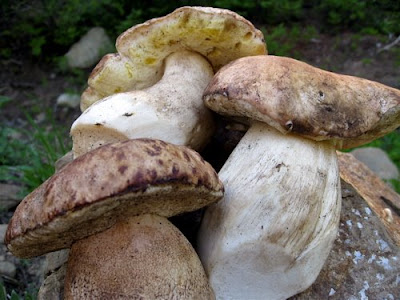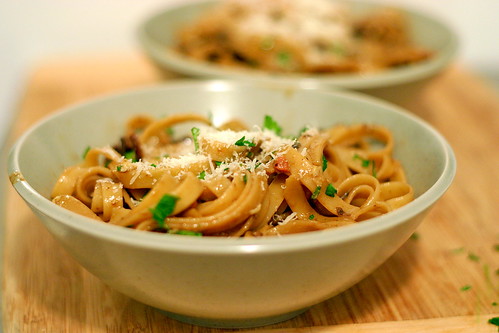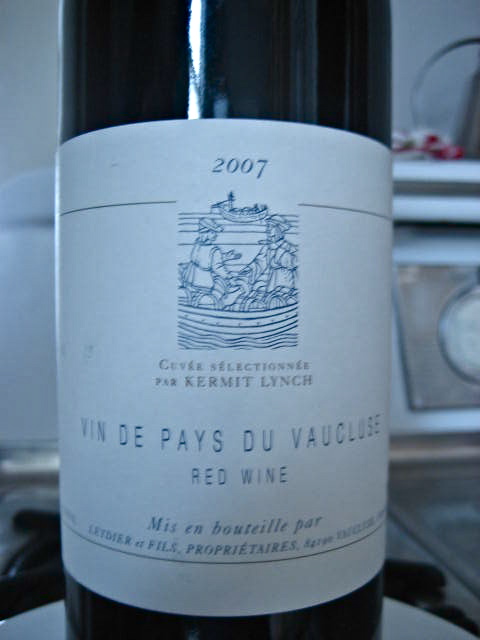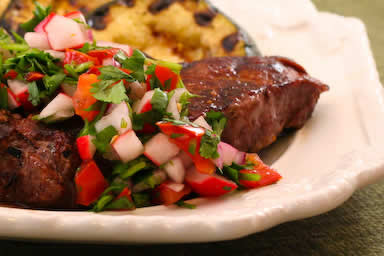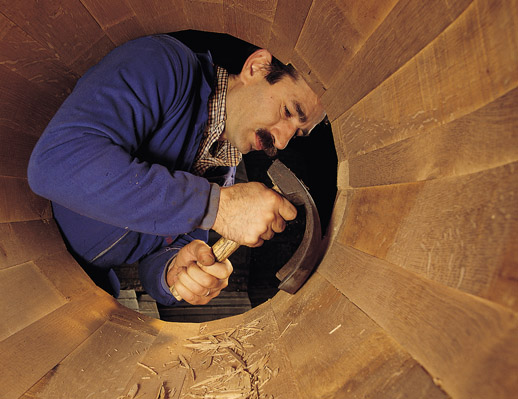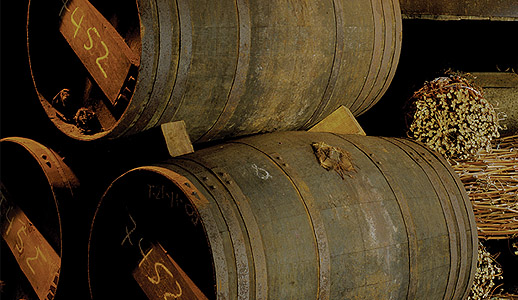 Check out some of our latest palate pleasing offerings at every price point!Don Cristobal 1492 Wines
Check out some of our latest palate pleasing offerings at every price point!Don Cristobal 1492 Wines - Our friend Gabe from Select knows that we're always looking for fun new things to stock the cheap/tasty rack (all wines under $10) and how much we love wines from Argentina, so he brought these cool little blends to try. We loved them and have waited months for their arrival and they are finally here! Both are blends of 3 different grapes and are fresh, young balanced wines that are perfect for summer sipping and barbecue! The red is Sangiovese, Bonardo and Merlot and the white is Chenin, Viognier and Chardonnay. Nothing too complicated here, just fun, lively easy to drink wines and at $8.50/bottle, it's just silly not to try them! And don't forget, you get a 10% discount on 6 or more cheap/tasty selections, everyday, all of the time! That brings your cost to $45.90 plus tax for 6 bottles, what are you waiting for!?!
$10 to $20 Range2008 Kermit Lynch Vin de Pays du Vaucluse Blanc - A delicious white made by Domaine de Durban in Beaumes de Venise, and the cuvée blend is selected by Kermit Lynch and bottled for him exclusively. A blend of roughly 50% each Viognier and Chardonnay, this white has subtly exotic aromas and fresh, lingering flavors. Great summer white!
2008 Page Sauvignon Blanc - Winemaker Bryan Page has a passion for Bordeaux that is evident in all of his wines. His Sauvignon Blanc adds 25% Semillion to the mix, ages it on its lees for 5 months and then barrel ferments the wine. The result? A classic Bordeaux Blanc with delicious California fruit; richness on the palate with apricot and green apple, but a crisp clean finish. Only 100 cases made.
2007 Misfit Wine Company Brujeria - Deep red berry fruit with exotic spices, the wine maker is going after a Ribera del Duero style wine with an Aussie twist! Tempranillo, Cab, Grenache and Shiraz, it's got nicely integrated tannins with a little earthy funk.
2007 Bodegas Olivares Altos de la Hoya - The heat-loving Monastrell is known as Mourvèdre in France’s Rhone valley and like the Rhone, Jumilla gets extremely hot during the summer days, but because of the 1500 foot elevation, nights are very cool. What does this mean for the wine? It means you get delicious ripe fruit with great acidity, two things that contribute to the high quality of this wine. We have carried it since we opened and have found the 2007 vintage to be the best yet. Dark, smoky berries with a bit of spice and cocoa, Tanzer says 91 pts!
2006 Ciacci Picolomini D'Aragona Toscana Rosso - From one of the premier Brunello producers comes this little IGT Sangiovese that blew me away for the price point. Pop it with a little fresh pasta from Chef Dan Esses and a Bolognese sauce, you will swear you are drinking something that is twice the price! Delicious fruit, a little spice and herbs with very integrated tannins.
2007 Domaine Pesquier Vaucluse - From near Provence in the very southern part of the Rhone Valley comes this delicious 50/50 blend of Syrah and Grenache from one of the Rhone's most sought after vintages. Exceptional old world quality with minerals, leather, spice, lavender and earth, this should be a daily drinker for any Cotes du Rhone lover in search of a little lower price point.
2008 Novellum Chardonnay - Coming from the young and energetic Jean Marc Lafage the producer of one of our other favorite, value priced whites, the Cote Est. The Domaine Lafage Novellum Chardonnay is a custom cuvee from importer Eric Solomon and a hot item in his portfolio. As Robert Parker puts it "Jean-Marc Lafage and Eric Solomon continue to render truly mind-boggling values." One of the things that makes this wine so delicious and unique is that is aged on the lees of Viognier for 3 months giving it peach and stone fruit as well as the more typical apple, pear notes. But get it now because this popular item does not last long on the shelves!
2005 Clearwater Creek Meritage - When Bridget and I tasted this for the first time, that knowing look passed between us, that thing that happens when a wine piques our interest and makes you go hmmm... Expecting a price tag that would put it in the $25-$30 price range, we were blown away by the quality for the actual price of well under $20!! A luscious blend of Cab and Merlot with a touch of fragrant Cab Franc thrown in this Bordeaux blend from Sonoma is beautiful, ripe and intense and ready to drink now!
$20-$30
2008 Villa Sparina Gavi - Gavi has a long history in Piedmont and celebrated most of its success in the 1960s. The white wine is named for the town of Gavi, located in the southeast province of Alessandria. It is produced from the Cortese grape, a varietal which has been grown throughout the province since the late 1600s. The Villa Sparina is what Gavi should be; rich almond and honey notes coat the palate, leaving you with a crisp mineral acid finish, ahh the best of both!
2005 Terrabianca Campaccio - The major head turner at our Italian tasting this week was this incredible Super Tuscan as we sold all we had, but Antonio promises another case by the end of the week! A meaty blend of 70% Sangiovese and 30% Cabernet, it is perfectly balanced with dark berry fruits, a hint of cocoa and tanned leather with velvety tannins and a long fabulous finish! Under $30, 92 points by Parker.
2007 Lioco Chardonnay -LIOCO is an exciting joint effort between Matt Licklider (a seasoned wine import specialist) and Kevin O'Connor (wine director at Michelin Two-Star Spago-Beverly Hills) to produce true "wines of origin". Their entry level Sonoma Coast Chardonnay is deliciously refreshing and different, no oak, natural yeasts, unfined and unfiltered showing chalky minerality, citrus and pears notes, "vivid" (a descriptor from their website that is right on!). Stephen Tanzer says 90 pts.
2007 Meiomi Belle Glos Pinot Noir - Known for producing high quality distinctive Pinot Noir from the top growing areas along the California Coast, the Meiomi has become our go-to Pinot in this price range. Soft, supple and sensuous with a long finish it is a must have for Pinot Noir fanatics!
Over $50
2007 Domaine Veneur Les Chateauneuf du Pape Origines - Parker's review says it all..."The 2007 Les Origines may turn out to be one of this estate's finest cuvees, although one should not overlook the 2006 Les Origines. A luxury cuvee sold at a reasonable price, the 2007 boasts a dense blue/purple color as well as a sweet perfume of blueberries, charcoal, creme de cassis, graphite, smoked meats, and herbs. Dense, full-bodied, and exceptionally pure, with a multilayered texture, moderate tannin, and a stunning finish, it will benefit from 2-4 years of cellaring, and should drink well for 20-25. 93-96 pts."
2004 Cigliuti Barbaresco Serraboella - In the glass, the first thing that throws you is the color, a rich ruby tone that tells you this is not a typical Nebbiolo. A true "meditation" wine, the aromas are so intoxicating you never want to take your nose out of the glass, but know you need to start drinking or your wine loving friends will finish the bottle before you even have a sip! But the earthy, leather, cherry and tar perfume keep hinting at the treasures that await your palate. And once you do actually take a drink of this exquisitely elegant yet rich and complex wine that coats your mouth with its velvety texture and flavors of violets, spice box, sweet tobacco and dark fruit, you find that somehow it tastes even better than it smells! Even at its $60+ price tag, it far out shines anything in its range! Robert Parker says 92pts.
 I snapped a few quick pictures at the Slow Food New Orleans cocktail class at Cure. We learned the tricks of the trade for 3 summer cocktails that featured local, fresh ingredients including the Anejo Highball, Bramble and Peach Smash.
I snapped a few quick pictures at the Slow Food New Orleans cocktail class at Cure. We learned the tricks of the trade for 3 summer cocktails that featured local, fresh ingredients including the Anejo Highball, Bramble and Peach Smash.
 And if you have yet to visit Cure, put it high on your list if visiting an upscale, beautiful cocktail lounge with great drinks, nice small plates on the menu and a really comfy atmosphere, sounds like a good time to you! We need more of this in New Orleans!!
And if you have yet to visit Cure, put it high on your list if visiting an upscale, beautiful cocktail lounge with great drinks, nice small plates on the menu and a really comfy atmosphere, sounds like a good time to you! We need more of this in New Orleans!!



